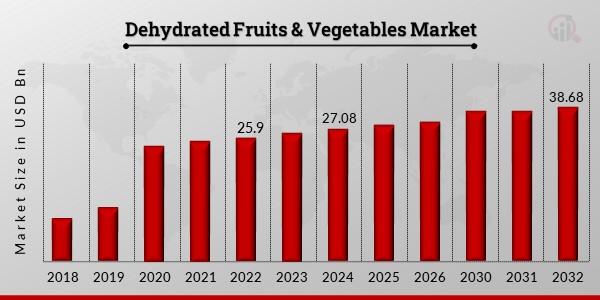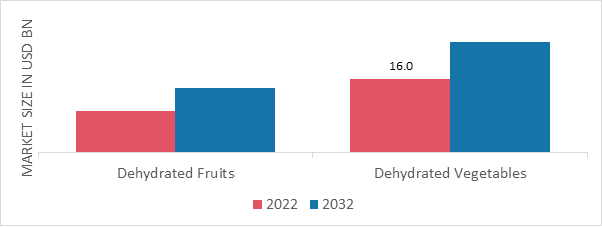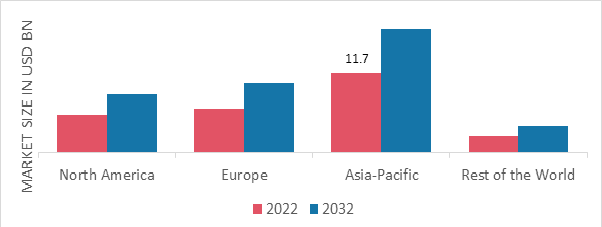

- Global Market Outlook
- In-depth analysis of global and regional trends
- Analyze and identify the major players in the market, their market share, key developments, etc.
- To understand the capability of the major players based on products offered, financials, and strategies.
- Identify disrupting products, companies, and trends.
- To identify opportunities in the market.
- Analyze the key challenges in the market.
- Analyze the regional penetration of players, products, and services in the market.
- Comparison of major players’ financial performance.
- Evaluate strategies adopted by major players.
- Recommendations
- Vigorous research methodologies for specific market.
- Knowledge partners across the globe
- Large network of partner consultants.
- Ever-increasing/ Escalating data base with quarterly monitoring of various markets
- Trusted by fortune 500 companies/startups/ universities/organizations
- Large database of 5000+ markets reports.
- Effective and prompt pre- and post-sales support.
Global Dehydrated Fruits & Vegetables Market Overview
Dehydrated Fruits & Vegetables Market Size was valued at USD 25.9 Billion in 2022. The dehydrated fruits & vegetables market industry is projected to grow from USD 27.08 Billion in 2024 to USD 38.689 Billion by 2032, exhibiting a compound annual growth rate (CAGR) of 4.56% during the forecast period (2024 - 2032). The market is expected to increase due to a number of market drivers, including rising consumer health consciousness and a trend toward healthy eating practices.

Source: Secondary Research, Primary Research, MRFR Database and Analyst Review
Dehydrated Fruits & Vegetables Market Trends
- Growing use of dehydrated fruits & vegetables in fast food chains is driving the market growth
Food dehydration is the preferred and generally accepted technique for preserving seasonal fruits and vegetables. These dehydrated fruits & vegetables are cheap, convenient, and wholesome. The food industry's rapid acceptance of fast food restaurants drives market expansion. In addition, several firms are continually working to diversify their selection of nutrient-dense dried items for meals, snacks, and on-the-go options. The market for dehydrated fruits & vegetables is also driven by the growing need to store food products for an extended period to use them as raw materials in finished goods. Thus, increased consumer concern about increasing the shelf life of dehydrated fruits & vegetables has revealed new growth markets for this industry. The demand for items made with seasonal components is also growing year-round, bolstering the market's expansion for dehydrated fruits & vegetables.
Given the substantial shift in customer perception of convenience/packaged food goods, dehydrated fruits & vegetables are becoming increasingly popular worldwide. The range of nutrient-dense dried items that brands offer in their ready-to-cook and on-the-go selections, snacks, and meals continually expands. Long-term opportunities in the dehydrated vegetable industry are also created by the expanding demand for food products to be preserved for extended periods as raw materials in their finished goods. The market CAGR for dehydrated fruits & vegetables is anticipated to expand as a result of growing fast food chain adoption and increased demand as a primary ingredient in camp food.
Dehydrated fruits & vegetables are used more and more by customers due to the rising volatility in raw material availability, manufacturing, and pricing brought on by seasonal variations. The market for dehydrated fruits & vegetables is expanding as a result of the expanding year-round demand for goods prepared with seasonal components. As consumers become more aware of the longer shelf life of dehydrated veggies, new opportunities are emerging for stakeholders. In urban regions, where busy work schedules give consumers little free time, food products with a longer shelf life are becoming more popular. For businesses in the dehydrated vegetable sector, these shifts are also creating long-term prospects. Thus, driving the dehydrated fruits & vegetables market revenue.
Dehydrated Fruits & Vegetables Market Segment Insights
Dehydrated Fruits & Vegetables Application Insights
Based on application, the dehydrated fruits & vegetables market segmentation includes Supermarket/Hypermarket, Specialty Retailers, Convenience Stores, E-Commerce and Others. The supermarket/hypermarket segment dominated the market. In particular, in light of the expanding store-based sales, sales through supermarkets and hypermarkets are anticipated to increase. The growth of supermarkets and hypermarkets will support the increase within the indirect channels segment. Additionally, there is a noticeable growth in sales through the online channel. This channel will emphasize the chances of rising to the top as more creators strengthen their internet presence.
Dehydrated Fruits & Vegetables Type Insights
The dehydrated fruits & vegetables market segmentation, based on type, includes Dehydrated Fruits and Dehydrated Vegetables. The dehydrated vegetables category generated the most income. Dehydrated vegetables are incredibly popular all around the world. They've even established themselves as essentials in every thru-hikers pack and can be found at many taverns. The potential for sales of dehydrated vegetables has increased due to the rising demand for healthy diets brought on by the development of several chronic conditions. Omelets, muffins, breakfast meals, biscuits, salads, and smoothies typically contain dried vegetable powder. Dehydrated vegetables are available in granulated and powdered form, which makes it simple to combine them with other ingredients in recipes to quickly and easily add flavor, color, and texture to your cuisine.
Figure 1: Dehydrated Fruits & Vegetables Market, by Type, 2022 & 2032 (USD Billion)

Source: Secondary Research, Primary Research, MRFR Database and Analyst Review
Dehydrated Fruits & Vegetables Regional Insights
By region, the study provides the market insights into North America, Europe, Asia-Pacific and Rest of the World. The Asia-Pacific dehydrated fruits & vegetables market area will dominate this market due to the rising popularity of luxury food products. The quest for new flavors, particularly in populous nations like China and India, is being fueled by the shifting eating patterns brought on by increased urbanization. In addition to saving consumers time in their hectic schedules, ready-to-eat foods significantly contribute to the segment's growth. Regional sales have been boosted by the item's increasing appeal across the Asia Pacific, particularly in India and China.
Further, the major countries studied in the market report are The US, Canada, German, France, the UK, Italy, Spain, China, Japan, India, Australia, South Korea, and Brazil.
Figure 2: DEHYDRATED FRUITS & VEGETABLES MARKET SHARE BY REGION 2022 (USD Billion)

Source: Secondary Research, Primary Research, MRFR Database and Analyst Review
Europe dehydrated fruits & vegetables market accounts for the second-largest market share. In large cities, individuals spend more time working and traveling, making it harder to spend time cooking. As a result, they choose other options, such as ready-to-eat meals. Due to the high demand for quick-to-prepare, delicious, and affordable food items in the area, the dehydrated vegetable sector is expanding. Furthermore, because local consumers prefer natural ingredients more, food makers are switching from synthetic to natural alternatives. So that they can reach a wider market, regional businesses have lately concentrated on developing distinctive, all-natural, and organic dehydrated fruits and vegetables. Further, the German dehydrated fruits & vegetables market held the largest market share, and the UK dehydrated fruits & vegetables market was the fastest growing market in the European region
North America Dehydrated fruits & vegetables Market is expected to grow at the fastest CAGR from 2023 to 2032 due to consumers' increasing dietary inclusion of tiny, packaged items. In addition to soups, baked items, salads, and sauces, dehydrated fruits & vegetables are utilized in many different types of food. As consumers want healthier products, the market for dehydrated fruits and vegetables in North America is expanding. Rises in affluence and income and a need for quick-to-prepare dishes, have fostered this demand. Moreover, US dehydrated fruits & vegetables market held the largest market share, and the Canada dehydrated fruits & vegetables market was the fastest growing market in the region.
Dehydrated Fruits & Vegetables Key Market Players & Competitive Insights
Leading market players are investing heavily in research and development in order to expand their product lines, which will help the dehydrated fruits & vegetables market, grow even more. Market participants are also undertaking a variety of strategic activities to expand their footprint, with important market developments including new product launches, contractual agreements, mergers and acquisitions, higher investments, and collaboration with other organizations. To expand and survive in a more competitive and rising market climate, dehydrated fruits & vegetables industry must offer cost-effective items.
Manufacturing locally to minimize operational costs is one of the key business tactics used by manufacturers in the dehydrated fruits & vegetables industry to benefit clients and increase the market sector. In recent years, the dehydrated fruits & vegetables industry has offered some of the most significant advantages to market. Major players in the dehydrated fruits & vegetables market attempting to increase market demand by investing in research and development operations include DMH Ingredients, FutureCeuticals, Kanegrade, Saipro Biotech, NutraDry, Paradise Fruits Solution, Activz, Baobab Foods, Milne MicroDried, and Herbafood Ingredients.
Baobab, which has its headquarters in Seattle, Washington, has dedicated production facilities there and in South Africa. By importing nutritionally superior health products from abroad, Baobab Foods is dedicated to enhancing human welfare and the well-being of a society. A range of unusual plant extracts, super-fruits, and health and wellness items from Africa are currently available from the company. They are the world's largest FSSC 22000 certified supplier and the top distributor in the USA of organic Baobab Fruit Powder from the southern African region. Its unique production methods provide the highest consistency, stability, and quality for all its products.
Herbafood Ingredients GmbH is an expert provider of superior plant-based food ingredients. As a pioneer in enhancing food for better health, it offers a wide variety of dietary fibers, emphasizing fibers produced from fruit. The apple, from which it derives not only dietary fiber but also apple sweetness, apple coloring, and apple extracts for taste and coloring, is one of its favorite raw ingredients. In addition, it develops the ideal sweetening concept, the cutting-edge nutritional supplement, or the proper blend of dietary fiber for your effective market presence. A natural and health-conscious diet is built on two pillars: dietary fibers and apple extracts.
Key Companies in the dehydrated fruits & vegetables market include
- DMH Ingredients
- FutureCeuticals
- Kanegrade
- Saipro Biotech
- NutraDry
- Paradise Fruits Solution
- Activz
- Baobab Foods
- Milne MicroDried
- Herbafood Ingredients
Dehydrated Fruits & Vegetables Industry Developments
January 2022: Crispy Green introduced a brand-new "Chilli Lime" flavor variation of their freeze-dried pineapple snack Pia Picante. It is created using imported pineapples from Costa Rica that have been air-dried after being infused with a unique species blend.
March 2021: The freeze-dried ingredient expert European Freeze Dry announced the addition of vegan freeze-dried meals featuring couscous-based recipes and a vegan bolognese. To its vast line-up of freeze-dried veggies and pulses, the company also introduced vegan mince, vegan chicken, and freeze-dried jackfruit.
February 2021: The latest ingredient from European Freeze Dry, in response to demand from the vegan market, is freeze-dried jackfruit. The benefits of freeze-dried jackfruit include its many applications, its texture, and consequently the potential to utilize it in pot dinners as a substitute for pulled pig or chicken.
November 2020: In order to produce dry vegetables such tomatoes, green and red bell peppers, onions, garlic, and carrots, BCFoods constructed a dehydration factory in Hebei, China. The company plans to attain a manufacturing capacity of 15,000 MTs by 2023 and sell dried vegetables to clients all over the world.
Dehydrated Fruits & Vegetables Market Segmentation
Dehydrated Fruits & Vegetables Application Outlook (USD Billion, 2018-2032)
- Supermarket/Hypermarket
- Specialty Retailers
- Convenience Stores
- E-Commerce
- Others
Dehydrated Fruits & Vegetables Type Outlook (USD Billion, 2018-2032)
- Dehydrated Fruits
- Dehydrated Vegetables
Dehydrated Fruits & Vegetables Regional Outlook (USD Billion, 2018-2032)
- North America
- US
- Canada
- Europe
- Germany
- France
- UK
- Italy
- Spain
- Rest of Europe
- Asia-Pacific
- China
- Japan
- India
- Australia
- South Korea
- Australia
- Rest of Asia-Pacific
- Rest of the World
- Middle East
- Africa
- Latin America
Leading companies partner with us for data-driven Insights
Kindly complete the form below to receive a free sample of this Report
Tailored for You
- Dedicated Research on any specifics segment or region.
- Focused Research on specific players in the market.
- Custom Report based only on your requirements.
- Flexibility to add or subtract any chapter in the study.
- Historic data from 2014 and forecasts outlook till 2040.
- Flexibility of providing data/insights in formats (PDF, PPT, Excel).
- Provide cross segmentation in applicable scenario/markets.





















